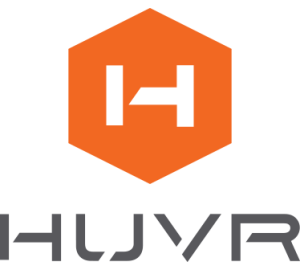Blog · 5 MIN READ
ESG: Bureaucratic Burden or Business Benefit – Part 3: Social safety; no net
Posted on December 02
Part 3: Social safety; no net
(Note: This is our third post on ESG management. Our first can be found here, and our second can be found here)
While the days of an entire town focused around a single plant exist mostly in the rear-view mirror of the US, it is fair to say that industrial operations are still a part of the community. Like all community members, the plant bears a proportionate responsibility for the health and safety of their fellow citizens. Since industrial work is often dangerous to the workers and their families, safety is a prime concern. Probably THE prime concern.
The thing is, the picture that is painted of companies ignoring safety guidelines to make a few extra dollars is generations behind the reality of the average facility, where safety is very much first. Automation and digitization have made operations more efficient, but also far safer, and the public has an extremely low tolerance for mishaps. When you shrink the sample to include the folks around the facility, that tolerance becomes zero. When you further decrease the sample to include only the facility’s workers, the motivation to be safe becomes more of a survival imperative. And, finally, when you consider the plant manager, safety is probably the most important part of their job.
Where’s the ‘social’ in all this?
As seen when discussing other ESG elements, plants were already working hard to maintain a safe environment long before it became a heavily stressed metric for investors. But the S in ESG doesn’t mean “safety,” it stands for “social,” so why all the safety talk? Well, aside from the fact that safety is a huge part of the social component, we are a digital inspection company, so there are limits on we can do to help companies increase their diversity, be involved in their community or focus on the wellbeing of their team beyond safety/HSE concerns. Those initiatives, we leave to others. What we can and do help with is reporting the results of those initiatives, especially safety and HSE information, so we will focus on that.
Asset Health
One of the best ways to ensure safety on the jobsite is to monitor the health of the assets in use. There are acts of God that cannot be planned for, but an asset malfunction due to operating an asset close to its limit is not one of them. Luckily, companies work hard to ensure each asset and the facilities in general are operating at their most efficient, which is also usually their most safe.
While inspections and maintenance used to be (and sometimes still are) done on a schedule, new technology like non-destructive testing (NDT) allows inspectors to see exactly where the asset components are at in their lifecycle. This leads to predictive maintenance, rather than preventative (these links are to blogs about those very things!), which increases safety as well as efficiency. This is just one example in a host of new techniques and technologies to keep assets running efficiently and safely.
Coordinated Planning for Safety and Health
While technology can facilitate greater asset health (because of improvements with the assets themselves and the monitoring of their overall health), the human component of scheduling and planning has the potential to sap resources and turn a potential boost into a swampy boondoggle. Inspections are often handled by third-party experts; these experts typically have specialized equipment to handle specialized inspections. Some inspections are managed by in-house teams—in reality, inspection strategies comprise a mix of both.
While the specialization yields better inspection results, scheduling all these elements can be a real pain complex task. On the one hand you’ve got to keep everyone on the same page, with stakeholders informed about the activities of numerous teams, often in vastly spread out areas. On the other hand you’ve got data all over the place, in who knows what format: the information tends to remain siloed because it begins in siloes. With both hands full, it sounds like everyone could use some help.
HUVR can help
HUVR’s vendor-agnostic platform ingests data from any source. Internal teams, external teams—HUVR can take all the inputs and combine, collate and track the information. This allows your HSE or safety teams to know the most current information about a particular asset or the health of the plant in general. When an inspection is performed, the information flows to the platform and is stored in a single, secure repository you control, eliminating silos for good.
Stakeholders are automatically notified, and advanced analytics helps them receive the information they need in the format they require. Teams have the information they need at their fingertips, making scheduling and planning a much easier feat. The immediate result is a safer operation.
All this impacts ESG: massive amounts of data are generated in the effort to ensure strategies are working. Instead of spending time searching for data, analysts are, well, analyzing. The work of corralling and collating data is replaced with value-added activities, and ESG reporting is a much simpler affair.
Conclusion
ESG is complicated and much of it is not hard numbers. The parts that are, like safety and HSE, should be as easy as possible for teams to work with. We know companies prioritize safety. ESG reporting is a venue to showcase those efforts, and HUVR can help make that a much simpler and value-add task.


